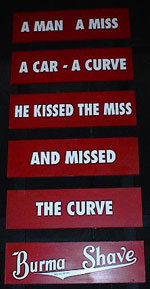
Jaron Lanier writes in a New York Times Op-Ed piece that creative types need to get paid for “digital content.” Lanier used to be in the “information wants to be free” camp. Now that information has become content and it seems to adding some value when it grows via spontaneous generation in caves like Facebook or Delicious, Lanier is interested in a piece of the action.

Lanier thought that somewhere down the road the creative people making digital content would find a payday. But the network is what you make it. The network we inhabit isn’t built for collecting tolls, it’s built for billboards along the roadside. There are some closed loop systems like Second Life where payment for digital goods is normal. All that’s required is for the system owner to control the physics of the entire virtual experience. iTunes is an end-to-end experience as well, but it’s an extension of a familiar payment model. These are the kind of models that Lanier is well-known for pioneering.
The question about getting paid is an interesting one. Right now it’s advertising and targeting that pays the bills. Better targeting + big traffic flow = Google.But what if we want an alternative to advertising.
When the work of art is a physical thing or a performance there’s a clear ceremony around collecting payment. The introduction of mechanical reproduction changed the intrinsic value of the work of art, the price, but not the nature of the transaction was affected. Generally the cost of mechanically reproducing art or creative output was still relatively high and required a specialized set of skills. In the age of digital reproduction, the only skill required is “copy” and “paste.” The original and copy are only differentiated by a creation time stamp. The digital is also viral in the network and the packets can be anonymous as they travel through the long series of tubes. When you bought that digital content, which vintage of time stamp is yours? Can we put toll booths on every entry point on the network? Can we implant the toll booth in the user?
This is the point where it would be nice to reveal the magic method by which creators of digital content get paid on an open network. There’s not one answer. Some clues to help us along the road? Philip Greenspun’s book was free and digital before I bought the copy that sits on my bookshelf. The 37 Signals book, Getting Real, was sold first as a PDF download, but is also available to read for free online. Here’s another clue, we pay for the container, not the content. It’s the form of the hardback book, not the text it contains. Think about that in relation to the network. You can see the problem.
Comments closed
